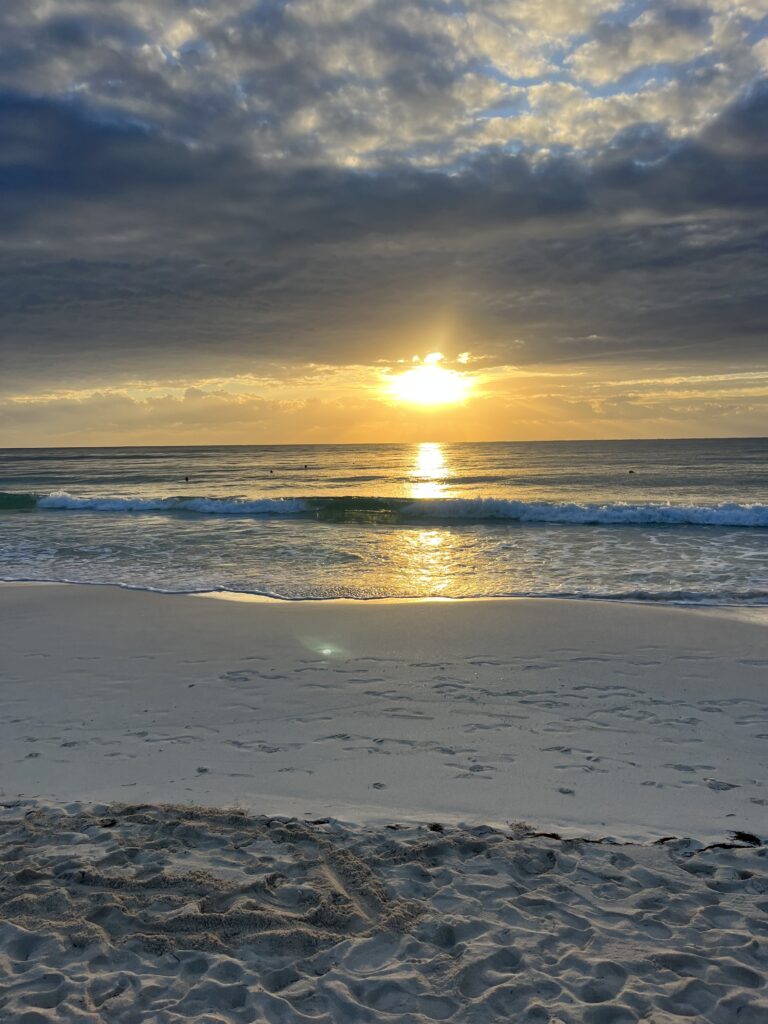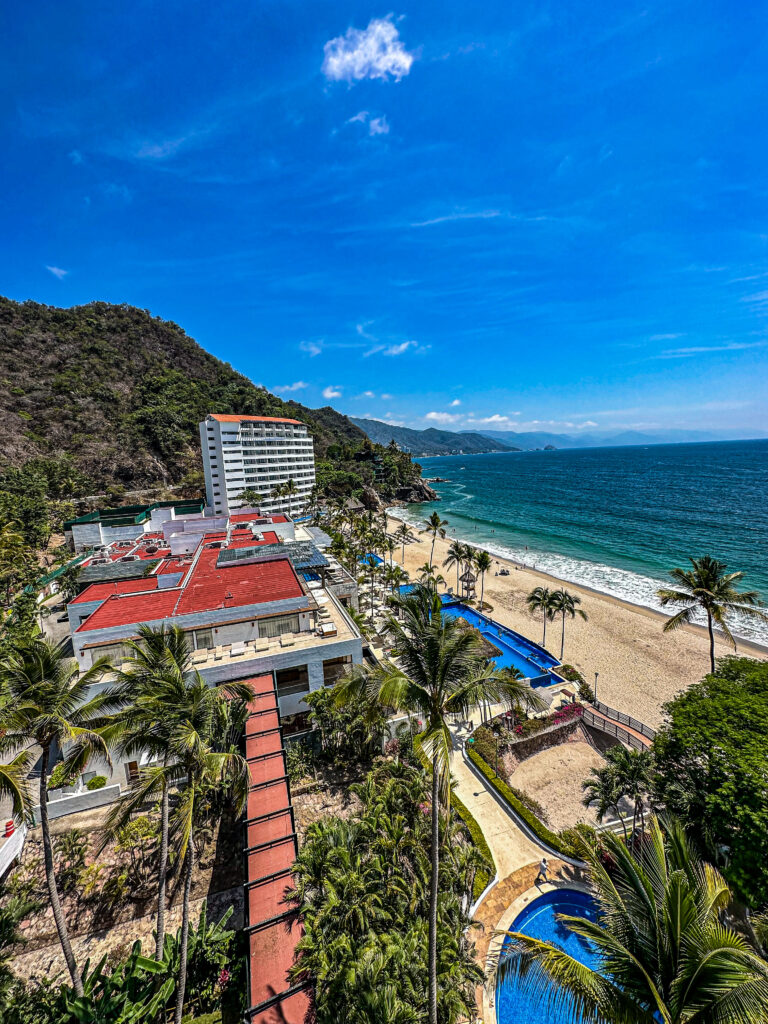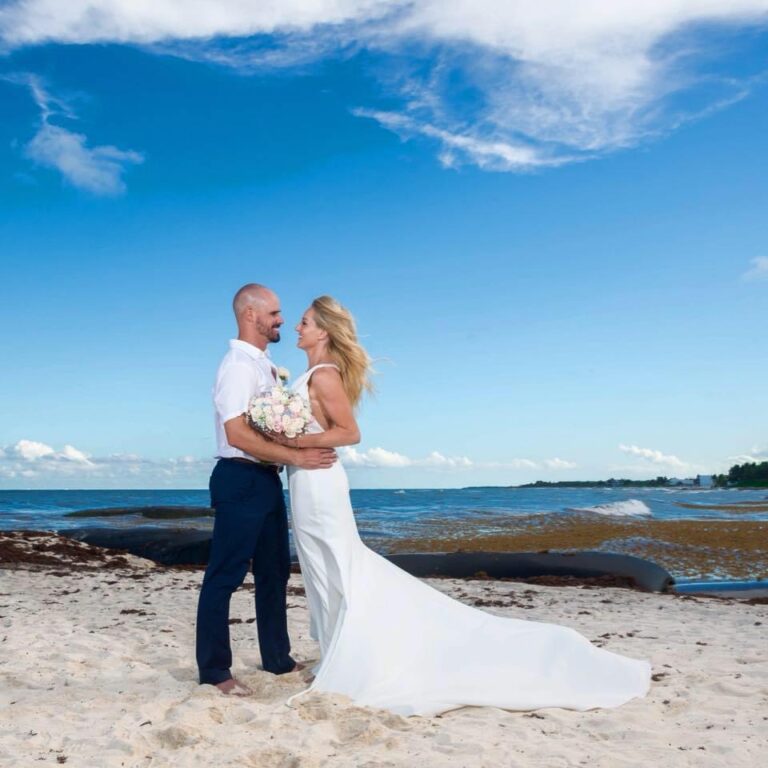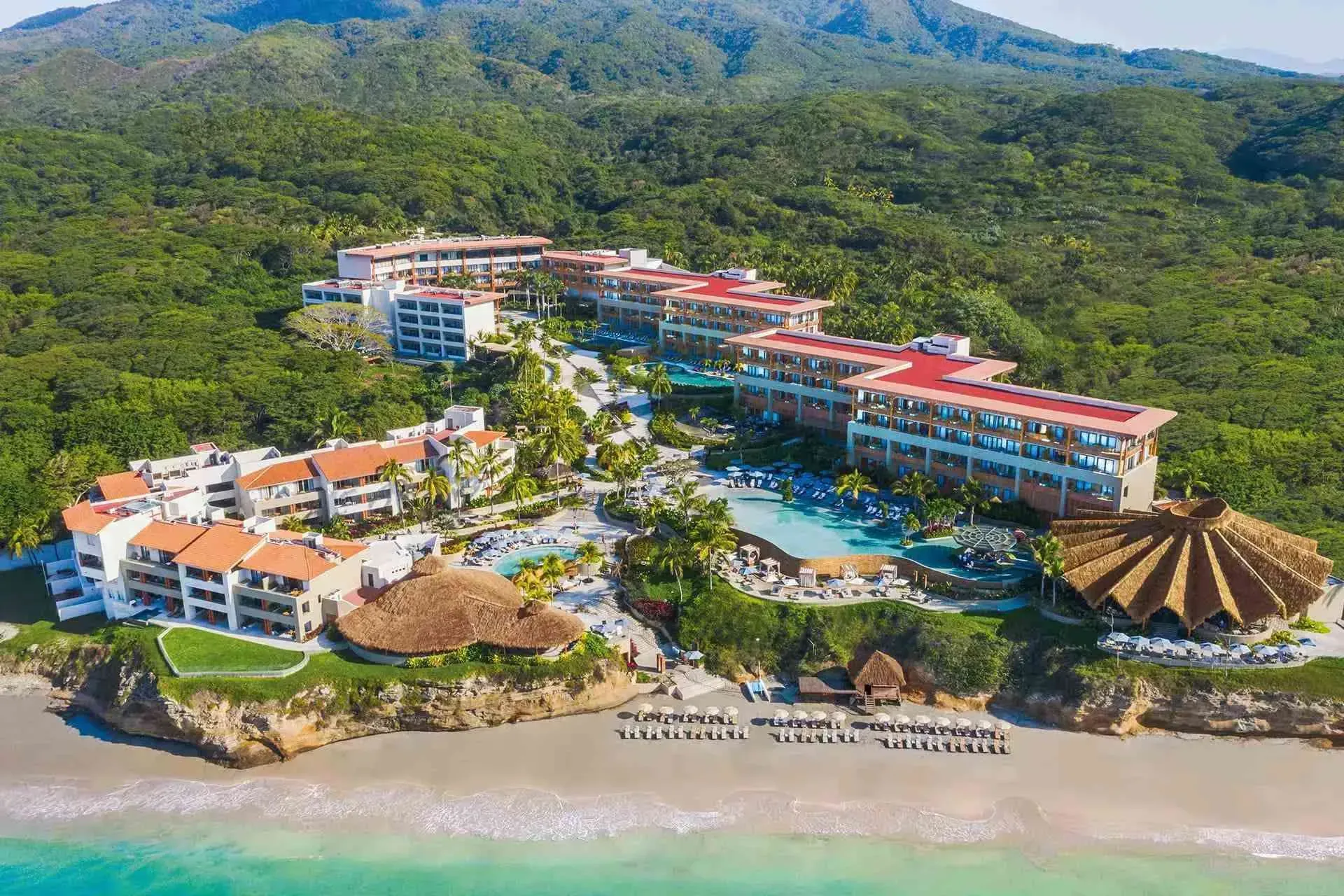
Puerto Vallarta, Mexico, masterfully plays the part of a remote tropical getaway, even as it grows into a larger city that's connected to the outside world by multinational chain stores and a steady stream of jets and cruise ships.
Puerto Vallarta's success has a lot to do with looks. However, in recent years, unchecked development along every inch of its beach has gradually turned the once-quaint fishing village enjoyed by the moneyed few into a mass-market destination. Still, there remains much beauty in Vallarta (as it is known to the locals and habitues) and the coast to its northwest.
Whitewashed walls and terra-cotta-tiled roofs are nestled along Banderas Bay, with the ornate crown of the Church of Our Lady of Guadalupe serving as a focal point. The lush, green foothills of the Sierra Madre Mountains to the east make for a beautiful and dramatic backdrop.
Puerto Vallarta's style is another key. Even as more and more travelers have arrived, and more and more hotels have been built, it has somehow managed to retain—or at least appears to retain—a cultured grace that's rare in heavily touristed areas.
Artists, architects, writers and chefs flourish in this rarified climate of tropical creativity. The restaurants, galleries and shops there are some of the finest in the country, drawing local talent from Mexico City and Guadalajara, and farther afield from Italy, Switzerland, Canada, the U.S. and elsewhere.
Must See or Do
Sights—Spiritual reverence at La Iglesia de Nuestra Senora de Guadalupe; a day trip to Mismaloya or Yelapa; whale-watching tours December-March in Banderas Bay; educational turtle-camp tours in which hatchlings of the endangered species are released.
Memorable Meals—Barcelona Tapas for the magnificent view and the best tapas in town; La Palapa for superb service, excellent cuisine and a romantic setting; Trio for its seasonal dishes and tasty desserts; El Arrayan for an intimate and authentic Mexican meal in a quaint, charismatic setting.
Late Night—J&B Salsa Club for the authentic salsa experience; Vallartacrawl for a high-energy crowd and dancing in three clubs; Garbo Bar for fabulous martinis in a sophisticated ambience with piano renderings; The Zoo for some atavistic conviviality.
Walks—A seaside jaunt along the spacious pedestrian-only malecon; a short hike into the hills of Gringo Gulch for excellent views of the city and bay; browsing the shops and restaurants at Marina Vallarta followed by sunset cocktails at its bird's-eye-view lighthouse.
Especially for Kids—Swimming with dolphins at Vallarta Adventures; splashing at Aquaventuras waterpark; seeing crocodiles in their natural habitat and learning all about them at El Salado Estuary.
Geography
Puerto Vallarta lies at the coastal center of Banderas Bay, a large semicircular inlet on Mexico's Pacific coast. The oldest part of the city is El Centro (also referred to as Viejo Vallarta, Old Town or downtown). The malecon, a bustling mile-long promenade, runs along the waterfront from the Hotel Rosita at its northern end to the South Side's Plaza Lazaro Cardenas. It passes the Plaza Principal (Main Square) and one block east of that is the city's main church. West of the church and several blocks inland, in the hills, is the neighborhood known as Gringo Gulch.
At the southern end of El Centro is Rio Cuale. Isla Rio Cuale is a narrow island at the mouth of the river. South of the river is another old neighborhood called South Side (better known as Zona Romantica or occasionally Emiliano Zapata). That's where you'll find the most popular downtown beaches—Playa los Muertos (which the government and tourist agencies prefer you call by the much less sinister-sounding Playa del Sol, but that sunnier-sounding moniker has never really caught on). Just south of Playa los Muertos is the hillside neighborhood of Conchas Chinas.
Developments, resorts and villages dot the bay's coastline. Heading north of downtown takes you to the oceanfront Zona Hotelera (hotel strip), Marina Vallarta (which contains the cruise-ship and yacht harbors, hotels, shops and restaurants), the airport and the main bus station. Continuing north, you'll find Nuevo Vallarta, which marks the beginning of the state of Nayarit and the area known as the Riviera Nayarit, a separate, traditionally upscale tourist destination running nearly 200 mi/322 km north along the coast and Banderas Bay. Beyond Bucerias lies La Cruz de Huanacaxtle with its 400-vessel-capacity marina and, at the northern tip of the bay, the surfer's paradise of Punta de Mita and the private Punta Mita complex housing luxury resorts, mansions and PGA golf courses.
South of Puerto Vallarta, a region that receives fewer visitors, are several beach areas, including Mismaloya and Boca de Tomatlan. Farther down the coast, and reachable only by boat, are Las Animas, Quimixto, Las Caletas and Yelapa. The Costalegre region, starting about an hour south and continuing to the next state after Barra de Navidad, has some of the most spectacular beaches in Mexico and is home to several exclusive resorts.
History
The area around Puerto Vallarta was originally inhabited by Tarascans, Chapalas, Huichol and members of the Aztec confederation of tribes. The first European to visit Puerto Vallarta was Francisco Hernandez de San Buenaventura, a nephew of conqueror Hernan Cortes.
As the story goes—it has likely been embellished over the years—the Spanish explorer and his party were met on the shore by 20,000 Indians, each carrying a flag made of bird feathers. In turn, the Spanish produced four banderas (banners), including one that depicted the Immaculate Conception. This display supposedly subdued the natives, who laid aside their feather flags, while a Spanish priest prayed for their souls. Banderas Bay takes its name from the event.
Centuries later the bay was a favorite of pirates who lurked in its coves and inlets waiting to plunder the richly laden Spanish galleons traveling from the Philippines to Acapulco. Smugglers trying to avoid the custom houses in San Blas also landed their boats in Puerto Vallarta.
Although the flag incident was said to have occurred in 1525, development of the bay didn't begin until the 1850s, when the Sanchez family used the Rio Cuale as a port for transporting silver from the mines in the nearby sierra. The town was called Las Penas then, and for a long time fewer than 2,000 people—mostly farmers and fishermen—lived there. In 1888, half the town was destroyed by fire. According to legend, the damage would have been less if most of the male population were not attending a cockfight. In 1918, Las Penas was renamed to honor Ignacio Luis Vallarta, governor of the state of Jalisco.
By the 1940s, commercial flights began landing on a dirt airstrip outside town. Artists and writers from the U.S., disillusioned with the McCarthy era, started immigrating to Vallarta in the 1950s and built homes in what is now known as Gringo Gulch. By the late 1960s, it was a hideaway for movie stars and other reclusive types, and remained charming and serene.
What really ignited interest in the city was Hollywood. In 1963, director John Huston chose Puerto Vallarta as the location for his film adaptation of Tennessee Williams' The Night of the Iguana, which starred Richard Burton, Deborah Kerr and Ava Gardner. Elizabeth Taylor wasn't in the movie, but she accompanied Burton, with whom she was having a torrid affair. Much of the filming was done in the deserted cove of Mismaloya. The antics of Taylor and Burton attracted the international press and gave Vallarta its reputation as a steamy romantic escape; soon, large numbers of travelers went to experience it for themselves.
In 1968, a road was built from Tepic, about 105 mi/169 km northeast of Vallarta, to connect Puerto Vallarta by road to the rest of the world.
Potpourri
Breaching humpback whales are a common (yet always exciting) sight along Banderas Bay in the winter, returning and departing on essentially the same schedule as Puerto Vallarta's many snowbirds. Tour outfits also provide hydrophones to hear them "singing."
For the first 12 days of December, Puerto Vallarta exhibits an especially festive air, when the Virgin of Guadalupe (patron saint of not only Puerto Vallarta, but also Mexico, North America and the entire Western Hemisphere) is honored with processions to the church named for her. Mariachis, charros (Mexican cowboys), pre-Hispanic dancers, fishermen and others enthusiastically take part, while camera-toting tourists merrily click away.
Legend—so far unverified—has it that disputes among the five stars of The Night of the Iguana were so intense that director John Huston—after filming wrapped—gave each a golden Colt .45 with exactly five bullets.
Huichol Indians in traditional dress make their famous beaded handicrafts in shops downtown. Among themselves, they go by the name Wixarika and are one of the largest groups of indigenous people in Mexico who maintain their ancient traditions.
Another group of indigenous people, the famous voladores ("flyers") of Papantla, originally from the eastern coastal state of Veracruz, now perform their 1,500-year-old, death-defying aerial dance along the malecon.
Don't be alarmed if you board a bus and are met by a singing troubadour, a juggler or even a poetry-reading orator. If you like the performance, leave them a peso or two; if not, well, chances are your stop will come up soon enough.
Location
Cruise ships sail into Banderas Bay and dock at Terminal Maritima (also known simply as "the Marina," not to be confused with Marina Vallarta). Tourist information is available in the terminal of the Port Authority (AP), and you'll also find local tour operators, bilingual guide-chauffeurs with cars, a car rental agency, souvenir shops, an internet cafe, public telephones, restaurants, bars, music, artisan markets, a money-exchange house and taxis. Ave. Francisco Medina Ascencio Km 4.5, Marina Vallarta. Phone 322-224-1000.
Just north of the terminal is Marina Vallarta, a yacht harbor and resort. Puerto Vallarta's Centro is about 10 minutes south of the terminal. Buses and taxis provide transportation. Just across the main highway is the Plaza Galerias indoor shopping mall with all manner of cafes, restaurants and boutiques.
Shore Excursions
Typical shore excursions offer tours of the city, beaches and the surrounding villages, canopy zipline excursions in the jungle, horseback riding, tequila tasting, swimming and snorkeling, shopping tours, swimming with dolphins, nature tours, sailing charters, scuba diving, Mexican cooking classes, deep-sea fishing, ATV tours, off-road dune buggies, or whale-watching excursions (December-March). Check with your travel agent for additional information.






































